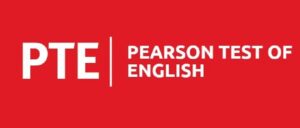IELTS listening test
The Listening test of IELTS is similar for both IELTS Academic and IELTS General Training test. You will need to answer 40 questions in response to four recordings. The total duration of the test is 30 minutes and if you are giving pen and paper mode then you will get extra 10 minutes to transfer the answers to the answer sheet. If you are giving a Computer based exam then your total duration for this section will be 30 minutes only.
There will be four recordings which will be a mix of monologues and conversations from a range of native speakers and you will only hear each recording only once. There are 10 questions for each part of the Listening test. In total, there are four parts divided into L1 and L2 Consisting of 10 questions for each recording. The four recordings are as follows:
Recording 1 A conversation between two people set in an everyday social context. In this there can be a telephone conversation between people regarding hotel accommodation, and buying travel tickets. The test includes ten MCQs.
Recording 2 A monologue set in an everyday social context, e.g. a speech about local facilities. In this recording, there is a general talk about local history or healthy eating habits and a presentation of student services etc.
Recording 3 A conversation between up to four people set in an educational or training context, e.g. a university tutor and a student discussing an assignment. This recording has an academic conversation only based on maybe a research project, two students discussing homework.
Recording 4 -It is an academic lecture which is a monologue on an academic subject, e.g. a university lecture. It can be anything ranging from a lecture on the history of photography, the study of wildlife and its behavior or a lecture on volcanoes. One does not need any outside knowledge.
How IELTS Listening answers are scored
There are total 40 questions in this section which is divided into two parts L1 and L2. Each recording pertains to 10 questions and each section has 20 questions. An examiner checks your paper. Each question carries 1 mark. There is no negative marking. This is converted into a ‘band score’ from 0 to 9. For example, you need 30 correct answers to get a band score of 7.0.
Variety of questions types in IELTS Listening
A variety of question types are used, chosen from the following: multiple choice, matching, plan/map/diagram labeling, form/note/table/flow-chart/summary completion, and sentence completion.
Task type 1 – Multiple choice
Task Type and Format | In multiple choice tasks, there is a question followed by three possible answers or the beginning of a sentence followed by three possible ways to complete the sentence. Test takers are required to choose the one correct answer – A, B or C. Sometimes, test takers are given a longer list of possible answers and told that they have to choose more than one. In this case, they should read the question carefully to check how many answers are required. |
| Task focus | Multiple-choice questions are used to test a wide range of skills. The test taker may be required to have a detailed understanding of specific points or an overall understanding of the main points of the listening text. |
| No of questions | Variable |
Task type 2-Matching
| Task type and format | Test takers are required to match a numbered list of items from the listening text to a set of options on the question paper. The set of options may be criteria of some kind. |
Task focus | Matching assesses the skill of listening for detail and whether a test taker can understand the information given in a conversation on an everyday topic, such as the different types of hotel or guest house accommodation. It also assesses the ability to follow a conversation between two people. It may also be used to assess test takers’ ability to recognize relationships and connections between facts in the listening text. |
| No of questions | Variable |
Task type 3-Plan, map, diagram labeling
| Task type and format | Test takers are required to complete labels on a plan (e.g. of a building), map (e.g. of part of a town) or diagram (e.g. of a piece of equipment). The answers are usually selected from a list on the question paper. |
| Task focus | This type of task assesses the ability to understand, for example, a description of a place, and to relate this to a visual representation. This may include being able to follow language expressing spatial relationships and directions (e.g. straight on/through the far door). |
| No. of questions | Variable |
| Task type and format | This question type requires test takers to fill in the gaps in part or of all of the listening text. This will require test takers to focus on the main ideas/ facts mentioned in the text. |
| Form Completion | It is often used to record factual details such as names, addresses, telephone numbers, and so on. |
| Table completion | It is used as a way of summarizing information that relates to clearly defined categories such as location, duration, cost & so on. |
| Flowchart completion | It is used to summarize a process that has clear stages, with the direction of the flow shown by arrows. |
Task Type 4- Sentence Completion
| Task type and format | Test takers are required to read a set of sentences summarizing key information from all the listening text or from one part of it. They then fill a gap in each sentence using information from the listening text. A word limit is given, for example, ‘NO MORE THAN ONE WORD AND/OR A NUMBER’.Test takers are penalized for writing more than the stated number of words. (Test takers should check this word limit carefully for each task: the limit is either ONE, TWO or THREE words). Contracted words will not be tested. Hyphenated words count as single words. |
| Task focus | Sentence completion focuses on the ability to identify the key information in a listening text. Test takers have to understand functional relationships such as cause and effect. |
| No. of questions | VariableWhile answering labelling questions, test takers should avoid changing the words from the recording in any way. |
Task type 6 – Short-answer questions
| Task Type and Format | Test takers are required to read a question and then write a short answer using information from the listening text. A word limit is given, for example, ‘NO MORE THAN THREE WORDS AND/OR A NUMBER’. Test takers are penalized for writing more than the stated number of words. (Test takers should check this word limit carefully for each task.) Contracted words will not be tested. Hyphenated words count as single words. Sometimes test takers are given a question that asks them to list two or three points. |
| Task focus | Sentence completion focuses on the ability to listen for concrete facts, such as places, prices or times, within the listening text. |
| No of questions | Variable |
Test takers may have to select their answers from a list provided on the question paper or you may even have to write in the answers, keeping to the word limit stated in the instructions.
You should read the instructions very carefully as the number of words or numbers you should use will vary. A word limit is given, for example, ‘NO MORE THAN TWO WORDS AND/OR A NUMBER’. If you use more than the word limit, your answer will be marked as incorrect so check the word limit carefully for each question. Contracted words will not be tested, e.g. ‘don’t’. Hyphenated words count as single words, e.g. ‘police-man’.
IELTS Listening score calculator
The calculator measures the scores after checking your answers. These are then converted into IELTS listening band scores which is as follows:
| Number of correct answers | Listening band score |
| 39-40 | 9 |
| 37-38 | 8.5 |
| 35-36 | 8 |
| 32-34 | 7.5 |
| 30-31 | 7 |
| 26-29 | 6.5 |
| 23-25 | 6 |
| 18-22 | 5.5 |
| 16-17 | 5 |
| 13-15 | 4.5 |
| 11-12 | 4 |
Good IELTS Listening score
For people giving general training, the band score required is 8 in listening and for students visa i.e. IELTS Academic, students require a score of 6 and above, so a score of 6.5 to 7 is a good one for a student visa.
Significance of different IELTS scores
| Band | Skill level |
| Band 0 | Did not attempt the test |
| Band 1 | Non-user |
| Band 2 | Intermittent user |
| Band 3 | Extremely limited user |
| Band 4 | Limited user |
| Band 5 | Modest user |
| Band 6 | Competent user |
| Band 7 | Good user |
| Band 8 | Very good user |
| Band 9 | Expert user |
Tips to improve your IELTS Listening band score
The listening section evaluates the comprehension level of candidates. The scores also depend on the understanding of different accents and dialects. A good IELTS listening band score confirms a candidate’s ability to understand English. It is the primary language in countries like Canada, the USA, the UK, Australia, and New Zealand, among others.
Tips to ace IELTS LISTENING SECTION
- Read the questions before the recording begins- This helps you to identify the type of information required and helps you to understand what you need to focus on. After completing a section, go through the next section in advance.
- Answer simultaneously- Answer the questions simultaneously as the tape plays. No additional or background knowledge is required.
- Check the word limit and spelling- while writing the answers check the word limit as you need to write within that limit.
- Check grammar carefully- Care needs to be taken about correct grammar. In sentence completion tasks, you may need to change the speaker’s words to make them fit the question grammatically
- Get used to different kinds of accents-Familiarize yourself with different kinds of accents. All recordings are heard only once. They include a range of accents, including British, Australian, New Zealand, American and Canadian.
- Use the breaks to look at questions-30-40 seconds break between different sections within the listening module.
- When in doubt, guess-Do not leave any blank in the answer sheet.
Conclusion
Thus with the given tips and tricks one can be adept in the listening section of IELTS and get the desired band score.





